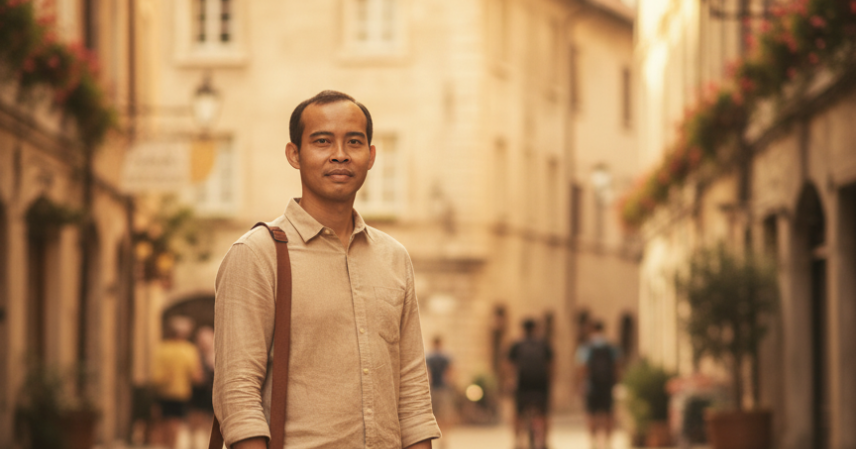In a world obsessed with speed, slow travel feels revolutionary. It’s not about ticking places off a list — it’s about being in those places. It’s the art of connecting deeply with cultures, savoring moments, and letting experiences unfold naturally. Instead of racing to see everything, slow travel teaches us to see more by doing less.
At its heart, slow travel is mindfulness in motion — a philosophy that values presence over productivity. Whether you’re exploring a mountain village in Italy or sipping tea in Kyoto, slowing down allows your body and mind to catch up with your surroundings — and with yourself.
1. What Is Slow Travel, Really?
Slow travel isn’t a new concept. It began as part of the slow living movement — a lifestyle that challenges the modern rush. In travel, it means staying longer in one place, forming connections, and valuing experiences over checklists.
Instead of hopping from one city to another every two days, a slow traveler might spend a week in a small town — learning to cook local dishes, chatting with artisans, or simply watching the rhythm of daily life.
This isn’t laziness — it’s conscious choice. You move not to escape your life, but to experience it more fully.
2. The Wellness Side of Slow Travel
Travel can be stressful — flight delays, packing, time zones, and pressure to “make the most” of every minute. Slow travel removes that anxiety.
By allowing yourself time to rest, breathe, and observe, your body’s natural rhythm resets. Stress levels drop. Your immune system strengthens. And your mind begins to notice beauty in the small things — the morning light on cobblestones, the sound of local laughter, the smell of freshly baked bread.
In essence, slow travel heals. It becomes a moving meditation that combines exploration with restoration — an antidote to burnout.
3. How to Practice Slow Travel Anywhere
You don’t need a month-long sabbatical to embrace slow travel. Here are a few mindful ways to apply it anywhere:
- Stay longer, move less. Pick one region and explore it deeply instead of rushing through multiple countries.
- Choose local stays. Skip big hotels — stay in guesthouses or homestays where you can connect with hosts.
- Walk and wander. Instead of taking taxis, explore on foot. The best moments are often unplanned.
- Plan for rest. Schedule nothing for at least one morning. Let your mood, not your itinerary, guide you.
- Engage with people. Talk to locals, join community activities, or learn a traditional craft.
These simple habits turn travel from a checklist into a personal journey of awareness.
4. The Cultural Depth You Gain
When you slow down, you see beyond tourist facades. You begin to understand how people live — how they eat, work, celebrate, and rest.
In Tuscany, you might learn that lunch is sacred family time. In Bali, mornings start with offerings and gratitude. In Japan, even a cup of tea is an act of respect.
Slow travel is the bridge between sightseeing and soul-seeing — between passing through and truly arriving.
And that deeper understanding transforms you from a visitor into a participant.
5. The Environmental Impact
Fast travel has a high carbon footprint — multiple flights, endless transport, single-use plastics. Slow travel, by contrast, supports sustainability.
When you stay longer in one destination, you spend less on transport and contribute more to local economies. You buy from small markets, support family-run lodgings, and minimize waste.
It’s not just good for you — it’s good for the planet. Slow travel turns tourism into stewardship.
6. Mindset Shifts: From FOMO to Presence
Fast travel is driven by FOMO — the fear of missing out. Slow travel replaces it with JOMO — the joy of missing out.
You no longer feel guilty for skipping famous landmarks. You learn that peace can be found in watching the sunset from your balcony or talking to a stranger in a café.
Presence becomes your compass. You start to realize that travel isn’t about where you go, but how you show up there.
7. A Personal Invitation to Slow Down
Next time you travel, resist the urge to fill your schedule. Sit longer at breakfast. Watch the way light moves through the streets. Ask locals about their morning rituals.
If you allow it, travel will teach you patience, humility, and gratitude — qualities often missing in the rush of modern life.
The art of slow travel isn’t about distance — it’s about depth.
Because the slower you move, the more life reveals itself to you.
For more insights on how responsible tourism supports the planet, visit the UN World Tourism Organization .


